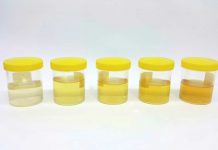
(AscendHealthy.com) – Seasonal Affective Disorder, or SAD, affects an estimated 0.5% to 3% of the population. Most cases occur during the fall and winter months when the days are shorter and darker — but about 10% of all cases strike sufferers during summer instead.
The difference might seem counterintuitive. After all, longer days and increased sunlight are often part of the remedy for SAD, conditions sufferers often attempt to recreate via the use of lightboxes and increased vitamin D intake. So, how do summer conditions actually contribute to the problem for some people? Let’s take a closer look.
Too Much of a Good Thing
We typically attribute SAD to reduced exposure to sunlight, which messes with the body’s natural sleep-wake rhythm patterns. We rely on light signals to trigger the production of certain neurotransmitters and hormones, and some people slip into cycles of deep depression when those signals decrease with the darker months.
In the case of summertime SAD, according to Healthline, sufferers appear to respond to an excess of sunlight. Experts believe that, in many cases, the long days can hinder some people’s ability to make the sleep hormone melatonin, a process normally triggered each night by the shift into darkness. Low melatonin production means difficulties sleeping, which can lead to insomnia, irritability and depression.
Summer can hit us with a few other challenges that may also contribute to SAD. WebMD reports that disruptions to our normal schedules — kids being out of school, for example — can make summer unexpectedly stressful. When we combine worries over travel and expenses, the uncomfortable heat and expectations of looking good in shorts or bikinis, the hotter months can make life downright miserable for some people.
Identifying the Symptoms
Depression is the most prevalent issue related to summertime SAD, although problems sleeping, anxiety and appetite loss are also common. Some people might not identify it as SAD because of the time of year. Also, whereas this condition usually causes increases in appetite, weight gain and excessive sleeping during winter months, summer SAD is more likely to cause weight loss and inability to sleep.
Risks of developing either are higher in people with major depressive disorder and bipolar disorder. Most cases first occur when the sufferer is in their 20s or 30s. Also, just as living closer to the poles increases risks for traditional SAD, living closer to the equator appears to be a factor in summertime SAD.
Breaking the Cycle
Combatting summertime SAD works using the reverse approach for fighting it during the wintertime. Instead of increasing light exposure in the mornings, the goal is to limit it in the afternoons and evenings. Installing dark curtains and staying indoors the latter part of the day may help.
Experts also recommend controlling indoor temperatures to improve overall mood. A hot, stuffy room is enough to make anyone irritable, and it can affect sleep quality. Use air conditioning or fans to circulate the air and consider using a cooling blanket to keep the bed from feeling like a furnace.
Finally, remember to practice self-love, self-care and self-forgiveness this summer. If that family vacation or bikini bod is out of reach, remember that life’s too short to be miserable over fleeting worries. Why brood over issues outside of our control? Enjoy this summer despite any silly, self-imposed expectations.
SAD can threaten even the best-laid summer plans, but it doesn’t have to stop sufferers in their tracks. With the right strategy and a little work, we can find the balance we need to stabilize seasonal mood changes and enjoy the summer sun.
~Here’s to Your Healthy Ascension
Copyright 2023, AscendHealthy.com




















